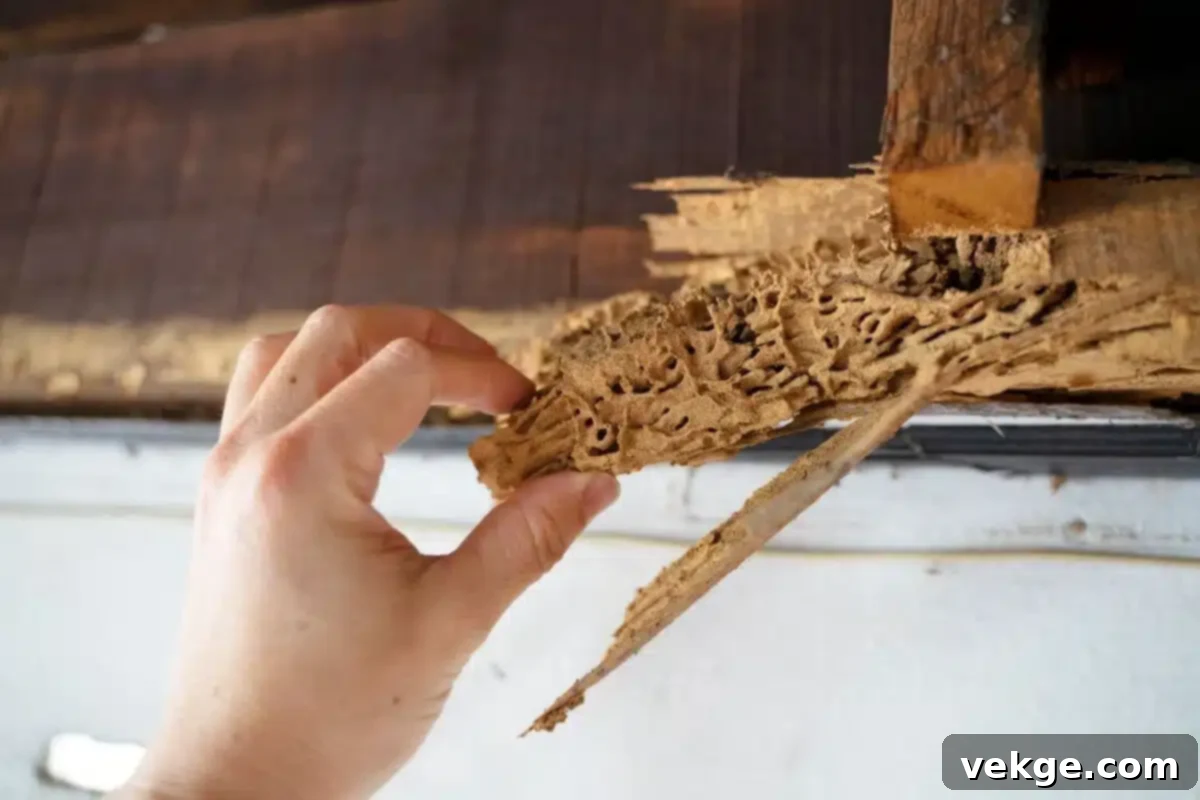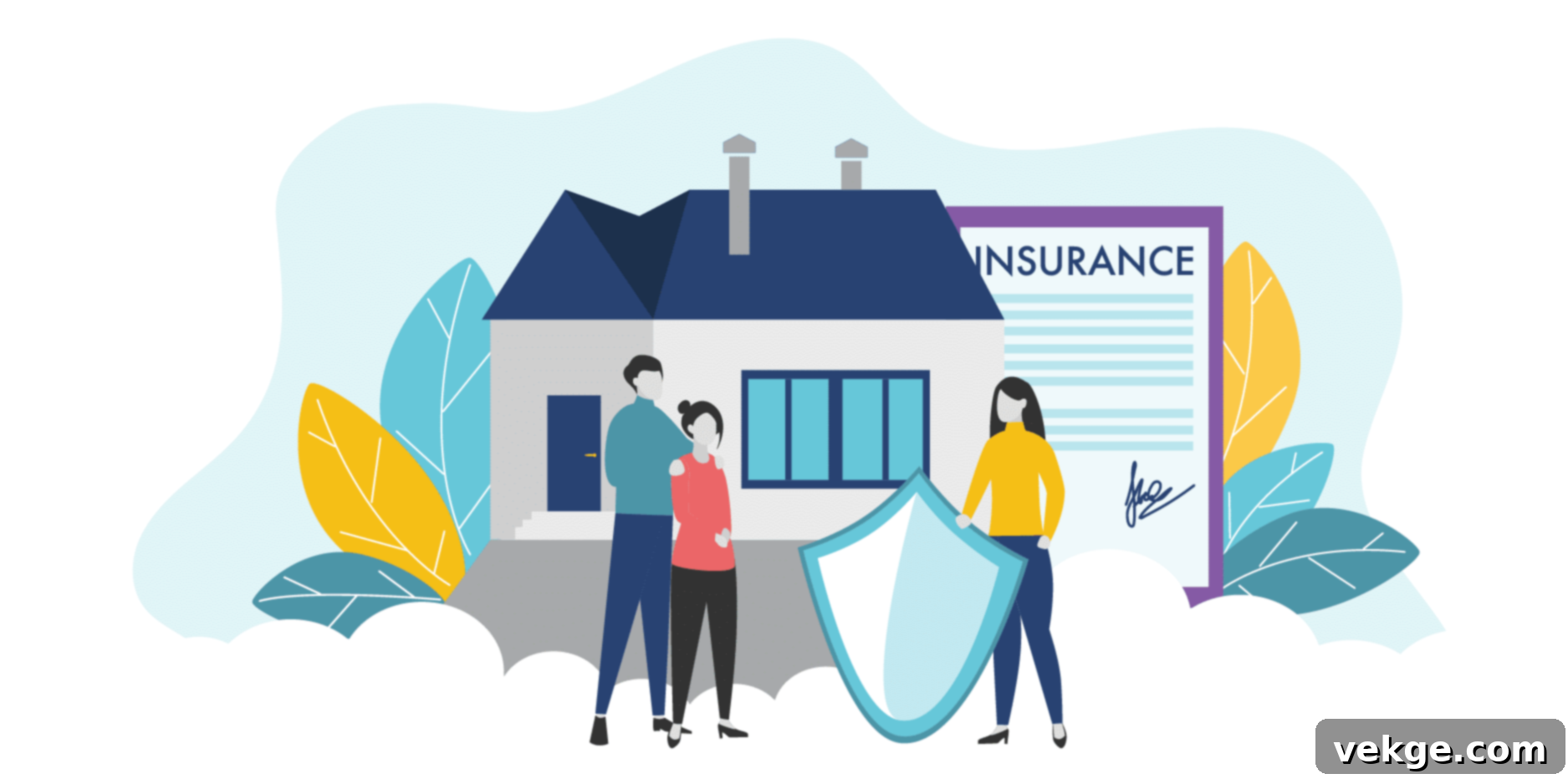Debunking 5 Critical Home Insurance Myths: Essential Truths for Savvy Homeowners
Becoming a homeowner is a significant milestone, often accompanied by a mix of excitement and new responsibilities. As you settle into your new property, one of the most crucial considerations you’ll face is securing adequate home insurance. However, for many first-time buyers, the world of home insurance can seem daunting, filled with technical jargon and often, misleading assumptions. You might find yourself skeptical, perhaps weighing the seemingly high yearly cost against the perceived benefits. Forbes reports that the average home insurance costs around USD 1,678 per year for approximately USD 350,000 in dwelling coverage, and that often doesn’t include everything you truly need.
It’s a common misconception among new homeowners that a single, standard insurance policy will provide complete financial protection for their assets and property. Many believe that basic homeowners insurance effortlessly covers everything from personal property damage to safeguarding the house from a wide array of natural disasters. Unfortunately, this belief can lead to a costly gap in coverage, leaving you vulnerable when you least expect it.
This article aims to clarify these misunderstandings, diving deep into five pervasive myths about home insurance that every homeowner, especially first-timers, needs to debunk. Understanding these truths will empower you to make informed decisions, ensuring your most valuable asset is truly protected.
Myth 1: Old Homes Are Cheaper to Insure
A prevalent belief among new homeowners is that older, perhaps more modest, buildings automatically come with lower insurance premiums. This misconception often stems from the idea that ‘older homes have low value’ compared to their modern counterparts, or that their historical charm somehow translates to lower risk. However, according to Bankrate, this is a significant home insurance myth that can lead to unexpected financial burdens.
In reality, older homes can frequently lead to higher premium costs due to several critical factors. These properties often feature outdated electrical systems, plumbing, and roofing materials that are more prone to failure, leaks, or fire hazards. Repairs on such systems can be exceedingly costly, especially if they require specialized knowledge, rare materials, or extensive labor to bring them up to current building codes. For example, replacing knob-and-tube wiring or galvanized pipes can be a major undertaking.
Furthermore, if you opt for a cheaper, less comprehensive insurance plan for an older property, you risk emptying your pockets when an issue arises. Without adequate coverage, you might find yourself paying out-of-pocket for expensive structural damages, a complete roof replacement, or a major overhaul of plumbing or electrical systems. The materials used in older homes might not be readily available, driving up repair costs, and in some cases, a full revamp is necessary to meet modern safety standards. This increased financial risk factor for insurers translates directly into higher premiums for homeowners. Therefore, it’s crucial to get a thorough inspection of any older home and discuss specific coverage needs with your insurance provider to avoid expensive refurbishments and ensure genuine protection.
Myth 2: Home Insurance Covers All Natural Disasters and Termite Infestations

Many first-time homeowners operate under the mistaken belief that a standard home insurance policy offers all-encompassing financial protection against any and all threats, including the destructive forces of nature and pesky invaders like termites. This is a dangerous misconception that can leave you facing thousands of dollars in property damage, completely uncovered.
Standard home insurance policies are designed to cover specific ‘perils,’ such as fire, theft, and certain types of storms. However, the vast majority explicitly exclude damages from major natural disasters like earthquakes and floods. According to the Insurance Information Institute, events such as floods, earthquakes, landslides, sinkholes, and even maintenance-related issues like sewer backup are typically not covered by basic homeowners insurance. If you live in an area prone to these events, you will need to purchase separate, specialized coverage. For instance, flood insurance is often provided through the National Flood Insurance Program (NFIP) or private insurers, and earthquake insurance is a distinct policy. On average, this additional protection can cost an extra USD 2,230 annually for a USD 300,000 coverage, but it’s a vital investment in high-risk zones.
Similarly, the idea that standard policies cover termite infestations is false. Insurance companies generally classify termite damage, along with other pest infestations, as a maintenance issue. They expect homeowners to take preventative measures and perform regular upkeep to avoid such problems. Damages that occur gradually over time due to neglect are typically excluded. This means if termites infest your home and cause structural damage, you’ll likely bear the full cost of extermination and repairs out of your own pocket. To mitigate this risk, it is highly recommended that homeowners perform regular home inspections and implement preventive measures, such as sealing cracks, managing moisture, and scheduling professional pest control, to detect and address issues before they become catastrophic.
Myth 3: Your Home Insurance Will Safeguard All Personal Belongings
One of the most common points of confusion for new homeowners arises from the technical jargon embedded within insurance policies. As Hippo points out, these documents are often filled with unfamiliar language that can be overwhelming to decipher. This complexity frequently leads to misinterpretations, particularly regarding the coverage of personal belongings, potentially resulting in significant financial loss.
While it’s true that home insurance provides some level of protection for your personal property, many first-time homeowners mistakenly believe it offers blanket coverage for all assets within the building. Standard policies typically include personal property coverage, but it’s crucial to understand its limitations. Most policies cover personal belongings against specified perils up to a certain percentage of your dwelling coverage (e.g., 50-70%). However, there are often specific limits on high-value items like jewelry, art, furs, firearms, and collectibles, which might only be covered for a few thousand dollars unless you purchase special endorsements or riders, often called “scheduled personal property” coverage.
Furthermore, it’s vital to understand the difference between Actual Cash Value (ACV) and Replacement Cost Value (RCV) for personal property. ACV policies pay out the depreciated value of your items, meaning you get less than what it costs to buy new ones. RCV policies, though often more expensive, pay the cost to replace the item with a new one of similar kind and quality, without deduction for depreciation. This distinction can significantly impact your recovery after a loss.
This myth also extends to liability. Many mistakenly believe home insurance fully covers personal liability in all situations. While it does provide liability coverage for injuries or damages that occur on your property and for which you are found responsible, there are limits and exclusions. Understanding terms like ‘peril’ (a specific risk of loss covered), ‘deductibles,’ ‘endorsements,’ ‘exclusions,’ ‘premiums,’ and the ‘declaration page’ (a summary of your policy) is paramount. Don’t be afraid to ask your insurance provider for a glossary of homeowners insurance terms and their definitions. Reading your policy carefully after gaining a grasp of these basic terms will help you determine the actual cash value versus replacement value of your assets, allowing you to choose appropriate additional protection like an umbrella policy for enhanced liability or specific riders for high-value physical assets.
Myth 4: Good Savings Means You Can Avoid Getting Home Insurance

The notion that substantial savings can negate the need for home insurance is a dangerous misconception that leaves many homeowners financially vulnerable. According to the Consumer Federation of America, a staggering 7.4% of all properties in the U.S. are uninsured, equating to an unprotected property value of USD 1.6 trillion. This startling statistic often stems from a desire to save on insurance premiums, with individuals believing their personal savings account can act as a sufficient safety net.
However, even robust savings can be quickly depleted by catastrophic events. Consider the cost of rebuilding or significantly renovating a house after a major disaster like a fire or severe storm. The average cost for such a project can easily exceed USD 284,764, depending on factors such as the roofing structure, type of construction, square footage, quality of building materials, and the age of the property. This figure can escalate dramatically if specialized materials or extensive structural work is required. Can your savings truly cover such an immense, unexpected expense, along with the additional costs of temporary living arrangements, debris removal, and potential code upgrades?
Beyond property damage, there’s the critical aspect of liability. If someone is seriously injured on your property and you are found legally responsible, the resulting medical bills, legal fees, and potential court judgments could reach hundreds of thousands, or even millions, of dollars. Even substantial savings would be swiftly drained, potentially forcing you into bankruptcy. Home insurance acts as a crucial financial safety net, transferring these unpredictable and potentially devastating risks from your personal finances to the insurer. It provides not just protection for the physical structure, but also invaluable liability coverage and funds for additional living expenses while your home is uninhabitable. Without it, your entire financial future could be at stake, making home insurance an indispensable investment rather than an optional expense.
Myth 5: You Cannot Get Homeowners Insurance if You Have a Pool, Treehouse, or Trampoline
The presence of certain recreational features on your property, often referred to as ‘attractive nuisances,’ can indeed complicate your home insurance options and often lead to increased premiums. Features like swimming pools, elaborate treehouses, and trampolines, while offering endless fun, significantly elevate the risk of injury. Insurers view these elements as increasing the likelihood of a liability claim, thus categorizing your home as a higher risk.
The reasoning is straightforward: pools carry risks of slip-and-fall accidents, diving injuries, and tragically, drowning. Treehouses can lead to falls resulting in fractures, cuts, or bruises. Trampolines are notorious for causing sprained ankles, broken bones, head injuries, and even spinal damage. Due to these heightened risks, it’s a common fear among homeowners that installing such features will automatically disqualify them from obtaining insurance coverage altogether. However, this is largely a myth. While it’s true that some insurers might be hesitant or impose higher costs, outright denial is not the most common outcome.
Instead, many insurance providers will offer coverage if appropriate safety features and precautions are in place. For instance, installing secure, locked gates around your pool, implementing automatic lights, or setting up alarms can significantly reduce risk. For treehouses and trampolines, ensuring proper installation, regular maintenance, adherence to weight limits, and strict supervision, especially of children, are crucial. It’s imperative to discuss these features and the associated risks with your insurance agent *before* or immediately *after* installation. Your agent can advise you on specific coverage options, potential exclusions, and the impact on your insurance rates. You might need to purchase additional liability coverage or an umbrella policy to ensure you have sufficient protection against potential lawsuits arising from injuries on your property.
Making Informed Decisions for Your Home’s Protection
Debunking these common myths about homeowners insurance is essential for every property owner, particularly first-time buyers, to protect their finances and most significant investment. Understanding that older homes might be more expensive to insure due to outdated systems and specialized repair needs can help you budget appropriately and seek comprehensive coverage from the outset.
Recognizing that standard policies do not cover all natural disasters or maintenance-related issues like termite infestations empowers you to proactively secure necessary add-on coverage for events like floods and earthquakes, and to prioritize regular home maintenance. This knowledge will help you prevent unexpected, massive expenses.
Furthermore, clarifying the scope of personal property and liability coverage ensures you secure adequate protection for your valuables and against potential lawsuits, possibly through scheduled personal property endorsements or an umbrella policy. Finally, knowing that attractive nuisances like pools and trampolines don’t necessarily disqualify you from coverage, but rather require specific safety measures and open dialogue with your insurer, allows you to enjoy these amenities responsibly.
By dispelling these myths and arming yourself with accurate information, you are better prepared to navigate the complexities of home insurance. Take the time to review your policy, ask questions, and tailor your coverage to your specific needs and risks. Are you ready to make an informed decision and truly safeguard your home and financial future?
